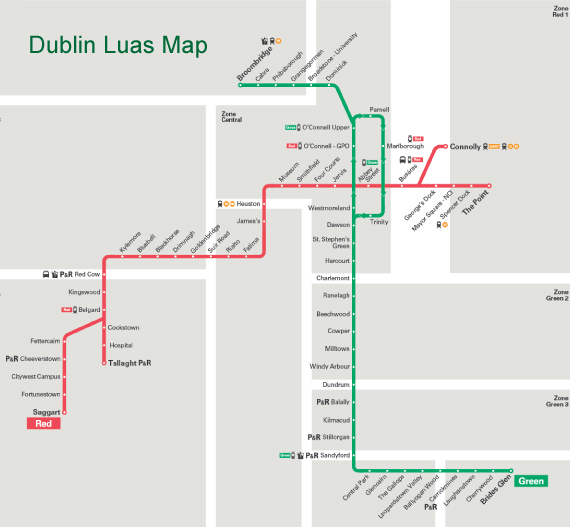Dublin Metro System: A Comprehensive Guide to Public Transportation
Dublin, Ireland’s vibrant capital city, currently operates without a traditional underground metro system, but significant developments are underway that will transform the city’s public transportation landscape. Understanding Dublin’s current transport network and the ambitious MetroLink project is essential for residents, visitors, and urban planning enthusiasts alike.
Current Dublin Public Transportation System
Dublin currently lacks an underground metro system, instead utilizing electrified suburban trains, diesel commuter rail, trams, and an extensive bus network to serve the Greater Dublin Area. The city’s public transport system consists of several integrated components that effectively connect different areas of the metropolitan region.
The DART (Dublin Area Rapid Transit) serves as one of Dublin’s most popular transport options. The DART offers scenic journeys along Dublin’s coastline, running from Greystones in the south to Howth and Malahide in the north, connecting the city center with beautiful coastal destinations.
The Luas tram system provides light rail services across Dublin, with red and light green lines forming the tram network that efficiently connects various neighborhoods and key destinations throughout the city.
Dublin Bus operates the most extensive public transport service in the city, serving as the most widely used form of public transport in Dublin with routes covering virtually every area of the Greater Dublin Area.
The MetroLink Project: Dublin’s Future Metro System
Dublin’s long-awaited metro system is finally becoming reality through the MetroLink project. MetroLink aims to develop a high-capacity, high-frequency segregated rail corridor from Charlemont to Swords, via Dublin Airport, representing a transformative infrastructure investment for the city.
The 18.8km mostly underground driverless metro line will serve 16 stations, including major stops at Ballymun, Glasnevin, and Ranelagh. This automated system will provide direct connections to Dublin Airport, addressing a long-standing transportation gap in the city’s network.
Timeline and Development Progress
The MetroLink project has experienced various delays, but significant progress is now evident. Construction work tendering had not commenced by mid-2025, with the projected start date updated to 2028. However, more recent reports suggest construction is planned to begin between 2026 and 2031, with the metro system expected to become operational by 2029.
A formal consultation period concluded in October 2024, and decisions on the €9bn MetroLink rail project are expected within weeks as of July 2025.
Economic and Transportation Impact
Dublin Airport supports 117,300 jobs in the Irish economy, with 19,200 employed directly at the airport, highlighting the significant economic importance of connecting the airport via metro. The MetroLink will integrate seamlessly with existing services, providing a fully integrated public transport system in the Greater Dublin Area.
Conclusion
While Dublin currently operates without a traditional metro system, the city’s comprehensive public transportation network effectively serves millions of passengers annually. The upcoming MetroLink project represents a major leap forward in urban transportation infrastructure, promising to enhance connectivity, reduce traffic congestion, and provide Dublin with a world-class metro system that will serve the city well into the future.

